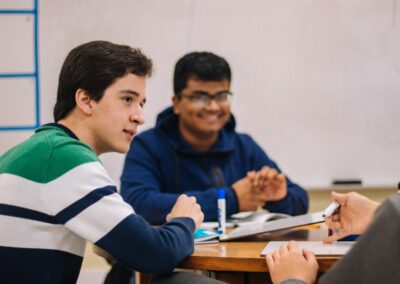Overview
Using the Law of Conservation of Energy as a centerpiece, this activity explores the transference of energy between different objects and the transformation of energy into different forms – potential and kinetic.
NB Curricular Connections
Science 8
- Strand: Scientific Literacy – Big Idea: Investigation – Skill Descriptor: Plan investigations to answer questions about relationships between and among variables observed in motion and stability, the Laws of Motion, and space exploration.
What you’ll need
- Computer with projector
- Strike-anywhere matches (10/group)
- Candles (1/group)
- LEDs and lamps
- Incandescent bulbs (can use the same lamps, if necessary)
- Balloons (3/group)
Instructions
- Download the Input vs Output Instructions and Input Vs Output Presentation.
- Introduction: Match and candle – The module begins with students trying to identify the numerous ways that energy transfers and transforms from a match to a candle. (See the PowerPoint slide notes for the full list.) Then students perform an experiment with a lit candle. In it, students gradually increase their distance from the candle to determine how far away they can stand and still blow it out. They evaluate how much more energy is required to blow it out from greater distances.
- Part 1: Law of Conservation of Energy and light bulbs – Students begin by watching an animated definition of the Law of Conservation of Energy, which explains that energy is neither created nor destroyed. Then, they explore the differences between incandescent bulbs and LEDs. LEDs use a lot more of their energy for radiant (light) energy. Students experiment with bulbs and balloons to learn about energy transference and transformation and to understand how much more heat energy emits from incandescent bulbs.
- Part 2: What is energy efficiency? – This section connects energy transference and transformation to energy efficiency. An animated definition of electric current illustrates how electricity powers so many things in our homes. Students build on that understanding to develop a consensus definition for energy efficiency. Student groups then examine their everyday uses of energy and determine how to minimize waste and maximize efficiency.
- Part 3: Making an impact – In this culminating activity, students determine changes and steps to be more energy efficient. Student groups develop criteria for their recommendations, such as easiest to implement, likely to have the greatest impact, etc. Students then present and promote their recommendations.
Extension Ideas
- Consider pairing this activity with the speaker series video from Science East, What is Energy?, for an introduction of energy and demonstrations.
Reflection Activity
Global Competencies
- Collaboration
- Communication
- Critical Thinking and Problem SolvingCritical Thinking and Problem Solving
Acknowledgements
Activity downloaded from Alliant Kids – Teaching Units (alliantenergykids.com)




